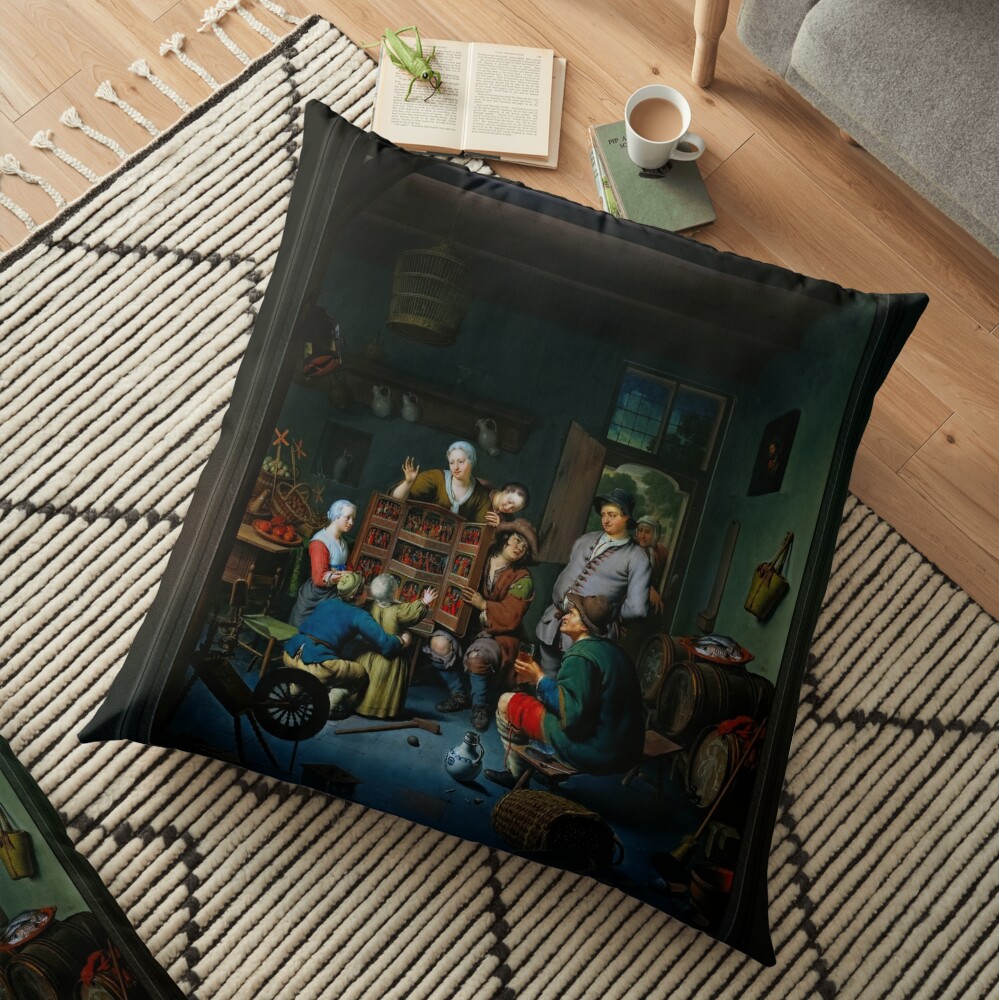
rakekiekによる (FraayCuriousではありません)
rakekiekによる (FraayCuriousではありません) c1718 オランダの画家ウィレム・ファン・ミエリス作 (1662 – 1747); 17世紀後半から18世紀初頭の彫刻家およびエッチング師.
This is a beautiful and enchanting ジャンルシーン in which a wondering Savoy stops by the home of a peasant family that is comprised of small children, teenagers of boys and girls, mother and father; showing them is viewing cabinet.

The younger children are amazed by the viewing cabinet, while the father sitting on a bench with a glass of wine in his left hand and his tobacco and smoking pipe on his left side watches intently at the work of art.
While his wife waves at her very young daughter that is taken back by the cabinet; and in the background by the door, that has the top portion open is a female neighbor that is looking on as well.
The viewing cabinet is a rarekiek scene that depict scenes from knights or popular novels; in this scene we see a King and Queen and the rest of the nobility in nine scenes.
The central room where the family is view the rarekiek is populated with a spinning wheel, baskets of fruit and fish that are situated on a table barrels, which may contain wine, slippers, a broom, a wooden bucket, benches and chairs, a framed picture on the wall, a bird cage with a bird in it hanging from the ceiling, a tote bag hanging on the wall, a jug of wine hang from a wooden post and a shelf withe vases hanging from hooks.
これは、リマスターされたデジタルアートのオールドマスターであり、パブリックドメインの画像を複製したものです。 キャンバスプリントオンライン.
以下の情報はから派生しています Wikipedia.org
Willem was born to genre painter Frans van Mieris the Elder (1635 – 1682), who was a successful Dutch Golden Age Portrait Painter and the leading member of a Leiden family of painters which also included his other son Jan van Mieris (1660–1690), as well as his grandson Frans van Mieris the Younger (1689 – 1763).
Though Willem was not as successful as his father he did achieve moderate success and was supported by several patrons who commissioned and collected some of his artwork; which consisted mostly of genre scenes and portraiture, some landscapes and some sculptures.
に 1681 Willem took over his fathers workshop after he passed away, having barely finished his training; and would be another two years before he was able to enter the Leiden painters guild, which happened in 1685.
When he took over his fathers studio he finished the works that were left incomplete due to his fathers death, showing his fathers influence in his technique, style and subject matter; working to uphold his fathers reputation as a Leiden Fijnschilder (Dutch Golden Age painters who, from about 1630 に 1710, strove to create as natural a reproduction of reality as possible in their meticulously executed, often small-scale works.); which was made popular by Dutch Golden Age Painter Gerrit Dou (1613 – 1675).
Though Willem did mostly portraiture and genre paintings, he was also an accomplished landscape painter, draughtman and etcher; and also dabbled in historical painting with great results.
歳の時に 31 he acted as headman and once as dean of the Leiden Guild of St. Luke and a year later in 1694 found along with Dutch Painters Jacob Toorenvliet (1636 – 1719) and Carel de Moor (1655 – 1738); which he and Moor directed until 1736, when he was forced to stop working due to partial blindness.



